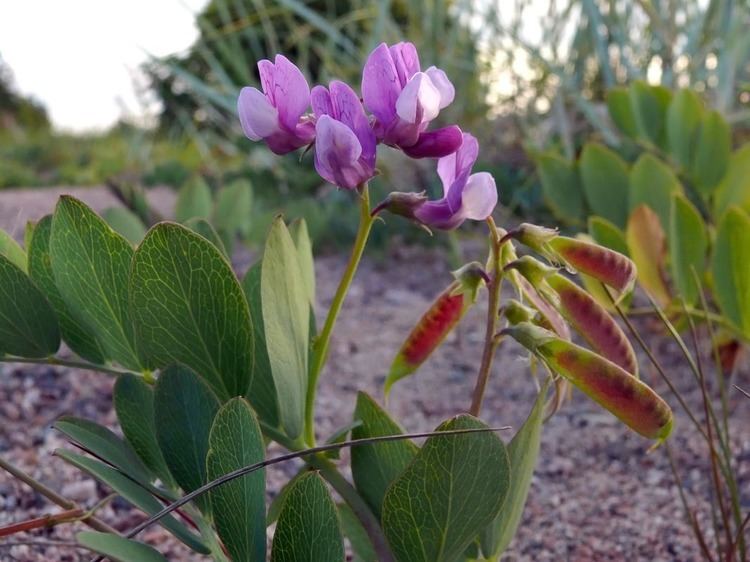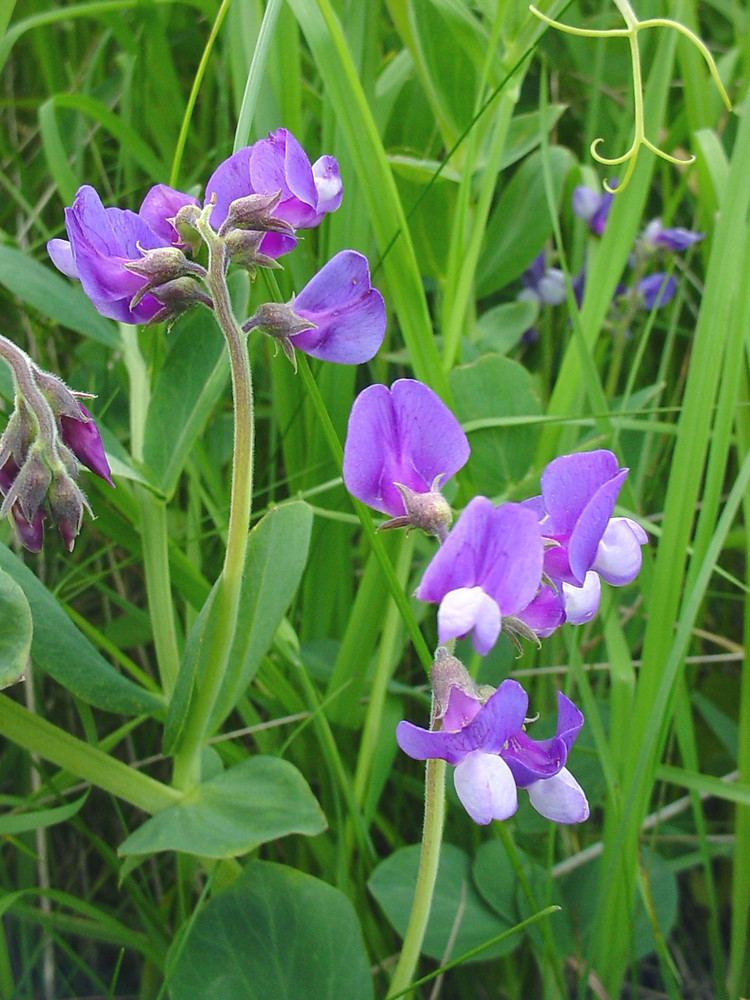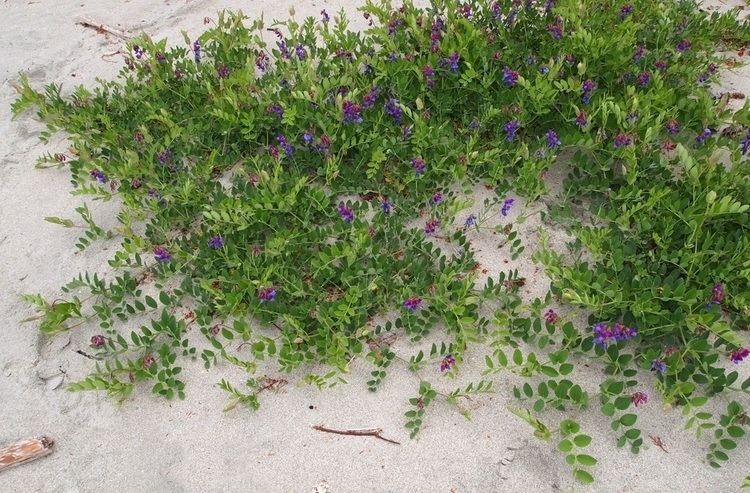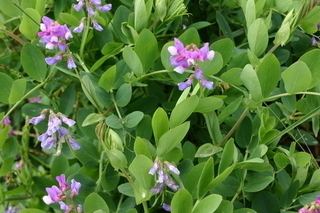Tribe Vicieae Rank Species | Higher classification Lathyrus | |
 | ||
Similar Yellow Pea, Black Medic, Lathyrus sativus, Silverweed Cinquefoil, Common Vetch | ||
Lathyrus japonicus (common names sea pea, beach pea, circumpolar pea and sea vetchling) is a legume native to temperate coastal areas of Asia, Europe, and North and South America.
Contents

It is a herbaceous perennial plant growing trailing stems to 50–80 cm long, typically on sand and gravel storm beaches. The leaves are waxy glaucous green, 5–10 cm long, pinnate, with 2-5 pairs of leaflets, the terminal leaflet usually replaced by a twining tendril. The flowers are broad, with a dark purple standard petal and paler purple wing and keel petals; they are produced in racemes of up to twelve flowers.

Description

Lathyrus japonicus is a perennial plant. The stem grows to 15 to 30 cm (6 to 12 in) and is limp, has no wings and is often hairless. The leaves are alternate, greyish green and somewhat succulent, almost stalkless with large, wide stipules. The leaf blades are pinnate with three to five pairs of narrow lanceolate leaflets with blunt tips, entire margins and a terminal tendril. The inflorescence has a long stem and five to twelve purple flowers, each 14 to 20 mm (0.6 to 0.8 in) long, turning bluer as they age. These have five sepals and five petals and are irregular with a standard, two wings and a fused keel. There are ten stamens and a single carpel. The fruit is a long brown pod up to 50 mm (2.0 in) in length. This plant flowers in mid-to-late summer (July and August in the Northern Hemisphere, January and February in the Southern Hemisphere).
Distribution and habitat

Lathyrus japonicus is native to temperate parts of Europe, Asia, North and South America. Its typical habitat is sandy or stony seashores and other coastal locations. The unusually extensive native range is explained by the ability of the seeds to remain viable while floating in sea water for up to five years, enabling the seeds to drift nearly worldwide. Germination occurs when the hard outer seed coat is abraded by waves on sand and gravel.
The pods can be eaten but like many members of the genus Lathyrus they contain β-oxalyl-L-α,β-diaminopropionic acid, which can cause paralysis called lathyrism. The leaves of the plant are used in Chinese traditional medicine.
